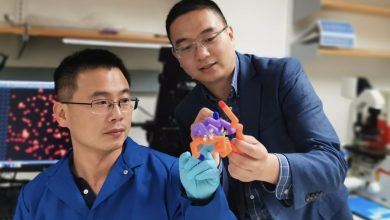Unraveling the Genetic Components of Type 1 Diabetes
New research into the genetics of type 1 has revealed unexpected risk factors and possible preventive measures

In the past three years, the number of people diagnosed with type 1 diabetes has increased by 30%, according to the CDC. This sudden rise in the occurrence of the disease speaks to the complexity of its heritability.
We know from studies like TrialNet and TEDDY, that there is a strong genetic component behind type 1, but that it requires some degree of environmental interference to be activated. Whether that interference is viral, bacterial, chemical, or some combination of these factors, has yet to be confirmed.
Before we can truly understand how the environment might affect the genetics of type 1 diabetes, we first need to have a full understanding of what makes someone genetically predisposed in the first place.
While this genetic picture is still incomplete, scientists have made progress in identifying different genes and family histories that raise an individual’s risk of developing type 1. And some of the findings are surprising, to say the least.
What We Now Know About the Genetic Components of Type 1 Diabetes
Studies looking at the genetic makeup and family histories of people with type 1 as well as those without, have helped researchers pinpoint certain risk factors that seem to contribute to the disease’s progression.
Here are some of the more recent discoveries in this field.
Certain Haplotypes Greatly Increase Your Risk
Certain genetic variations have been found to have a higher correlation with the development of type 1 diabetes. Two HLA haplotypes, in particular, seem to predict the greatest T1D risk, with that risk increasing significantly in individuals who show both haplotypes.
Only about 1% of the population falls into this double-risk category, yet, 40% of diagnosed type 1s carry both these genes, according to a study published in Pediatric Diabetes.
But having both haplotypes doesn’t guarantee you will end up with diabetes. Likewise, not having these genes doesn’t guarantee you can’t develop the disease.
The Number of Diagnoses in Low-Risk Haplotypes is Increasing
While type 1 diabetes diagnoses as a whole have increased greatly in the past three years, the number of people showing high-risk haplotypes being diagnosed has actually decreased.
Meaning, most of those with newly diagnosed diabetes don’t show any known high-risk genetic markers for the disease.
The population that has seen the greatest increase in diagnosis rates since 2017 are children of minorities. This suggests that other haplotypes, more commonly seen in non-whites, may be strongly associated with the development of diabetes, we just haven’t identified them yet.
Having Type 1s In the Family Increases Risk In Most Cases
Not surprisingly, having someone with type 1 in your immediate family increases your risk of developing the disease. But, this risk is not as high as you might think.
Of those currently living with diabetes, only 10% have a first-degree relative with the disease. The fact that the vast majority of those diagnosed don’t know anyone in their family with diabetes is a testament to the complex heritability of this condition.
Even within families, who will end up with diabetes is hard to predict.
Children of type 1 fathers or siblings of type 1s have about a 10% higher chance of developing the disease than children of type 1 mothers. To complicate things further, the age the mother was at diagnosis and at the age she gave birth also plays a role in how likely the child is to develop type 1.
Having Type 2 Diabetes In the Family Also Increases Risk
One of the most interesting findings to come out of the TEDDY study is the fact that a family history of type 2 diabetes appears to play a role in one’s risk for developing type 1.
While a family history of type 1 was associated with islet cell autoimmunity (the first step toward developing diabetes), a family history of type 2 diabetes was more strongly associated with the progression of the disease to clinical diagnosis.
Interestingly enough, a second-degree relative with type 2 was associated with a delayed progression toward clinical diagnosis compared to children without this relative who still went on to develop type 1.
This newer discovery seems to indicate that there is some overlap between genes that contribute to type 1 and those that contribute to type 2. And, that it may be possible for some people at risk for type 1 to use lifestyle changes to reduce their risk if they have type 2 relatives.
The Path to Prevention
With every discovery into the genetics behind type 1 diabetes, we seem to get back as many questions as we get answers, but we are making progress.
This progress has led to a number of potential preventative treatments being put to the test, including engineered T cell therapy and gene deletion therapy.
With everything that we now know about the causes of this disease, it is only a matter of time before a successful preventative makes it through clinical trials.







